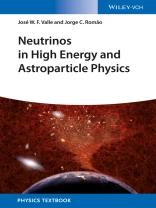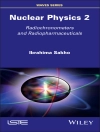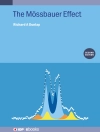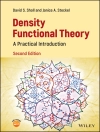This self-contained modern textbook provides a modern description of the Standard Model and its main extensions from the perspective of neutrino physics. In particular it includes a thorough discussion of the varieties of seesaw mechanism, with or without supersymmetry. It also discusses schemes where neutrino mass arises from lighter messengers, which might lie within reach of the world’s largest particle accelerator, the Large Hadron Collider.
Throughout the text, the book stresses the role of neutrinos due to the fact that neutrino properties may serve as a guide to the correct model of unification, hence for a deeper understanding of high energy physics, and because neutrinos play an important role in astroparticle physics and cosmology. Each chapter includes summaries and set of problems, as well as further reading.
Tabella dei contenuti
Foreword XIX
Preface XXI
1 Historical Introduction 1
2 The Standard Model 9
2.1 Introduction 9
2.2 Standard Electroweak Model 9
2.3 Spontaneous Symmetry-Breaking: Mass Generation 13
2.4 Quantization in the Standard Model 17
2.5 Renormalization in the Standard Model 19
2.6 Anomalies 21
2.7 Quantum Chromodynamics 24
2.8 Higgs Boson and Unitarity in the Standard Model 25
2.9 Theory Considerations on the Higgs Boson Mass 27
2.10 Experimental Tests of the Standard Model 30
2.11 Open Issues in the Standard Model 32
2.12 Summary 38
2.13 Problems for Chapter 2 39
3 Neutrino Masses and Mixing 41
3.1 Two-Component Formalism 41
3.2 Quantization of Majorana and Dirac Fermions 43
3.3 The Lepton Mixing Matrix 45
3.4 The Neutrino Neutral Current in Seesaw-Type Schemes 50
3.5 CP Properties of Majorana Fermions 50
3.6 Summary 54
3.7 Problems for Chapter 3 54
4 Neutrino Oscillations 57
4.1 Preliminaries 57
4.2 Neutrino Oscillations Formalism In Vacuo 57
4.3 Matter Effects in Neutrino Oscillations 62
4.4 Neutrino Oscillation Data 65
4.5 Global Neutrino Oscillation Analysis 76
4.6 Global Fit Results for Neutrino Oscillation Parameters 77
4.7 Summary and Outlook 80
4.8 Problems for Chapter 4 83
5 Robustness of Oscillations: The Case of Solar Neutrinos 87
5.1 Theoretical Preliminaries: Beyond the Standard Model 88
5.2 Beyond the Standard Solar Model 91
5.3 Oscillations with Spin-Flavour Precession 94
5.4 Constraining Neutrino Magnetic Moments 97
5.5 Summary 100
5.6 Problems for Chapter 5 100
6 Absolute Neutrino Masses 103
6.1 Preliminaries 103
6.2 Beta-Decay and Direct Searches for Neutrino Mass 103
6.3 Neutrinoless Double-Beta Decay 110
6.4 Light-Neutrino Exchange 0νββ Mechanism 112
6.5 Experimental Prospects in the Search for 0νββ 115
6.6 Neutrinoless Double-Beta Decay in Flavour Models 115
6.7 Short-Range Contributions to 0νββ Decay and the Weak Interaction Scale 117
6.8 Black Box and the Significance of 0νββ 120
6.9 Summary 121
6.10 Problems for Chapter 6 121
7 Neutrino Masses in SU(3)c⊗SU(2)L⊗U(1)Υ Theories 123
7.1 Preliminaries: The Origin of Neutrino Mass 123
7.2 Effective Seesaw Mechanism: Explicit Lepton Number Violation 125
7.3 Seesaw Dynamics in SU(3)c⊗SU(2)L⊗U(1)Y and the Majoron 127
7.4 Summary 134
7.5 Problems for Chapter 7 134
8 Higgs Boson Physics and Neutrinos 135
8.1 Higgs Production in the Standard Model 135
8.2 Higgs Decays in the Standard Model 142
8.3 Higgs Physics in Models with Low-Scale Lepton Number Violation 147
8.4 Summary 150
8.5 Problems for Chapter 8 151
9 Supersymmetry 153
9.1 Introduction and Motivation 153
9.2 Supersymmetry Algebra and Representations 155
9.3 How to Build a Supersymmetric Model 158
9.4 The Minimal Supersymmetric Standard Model 162
9.5 Mass Matrices in the MSSM 168
9.6 Couplings in the MSSM 176
9.7 Coupling Constant Unification 179
9.8 Experimental Constraints on the MSSM 180
9.9 Summary 180
9.10 Problems for Chapter 9 182
10 Spontaneous R-Parity Violation 183
10.1 Introduction 183
10.2 A Viable Spontaneous R-Parity-Breaking Model 184
10.3 Symmetry-Breaking 186
10.4 Main Features of the Model 189
10.5 Implications for the Electroweak Breaking Sector 192
10.6 Summary 197
10.7 Problems for Chapter 10 198
11 Bilinear R-Parity Violation 199
11.1 The Model 199
11.2 The Scalar Potential 200
11.3 Mass Matrices in the BRp VModel 201
11.4 Couplings in the BRp V Model 203
11.5 Neutrino Masses and Mixings in the BRp V Model 205
11.6 Neutrino Properties and BRp V Parameters 208
11.7 Approximate Formulae for the Neutrino Masses and Mixings 211
11.8 Summary 219
11.9 Problems for Chapter 11 219
12 Phenomenology of Bilinear R-Parity Violation 221
12.1 LSP Production 221
12.2 LSP Decays 223
12.3 Probing Neutrino Mixing via Neutralino Decays 226
12.4 Other LSP Scenarios 230
12.5 Summary 234
12.6 Problems for Chapter 12 234
13 Neutrino Masses and Left–Right Symmetry 237
13.1 Preliminaries: SU(3)c⊗SU(2)L⊗SU(2)R⊗U(1) Symmetry 237
13.2 ‘Standard’ SU(3)c⊗SU(2)L⊗SU(2)R⊗U(1) Symmetric Seesaw 239
13.3 Low-Scale SU(3)c⊗SU(2)L⊗SU(2)R⊗U(1) Seesaw Mechanisms 241
13.4 Experimental Constraints 242
13.5 Direct Searches for the Messengers of Neutrino Mass 243
13.6 Summary 246
13.7 Problems for Chapter 13 247
14 Neutrino Masses and Unification 249
14.1 Preliminaries: Unification in SU(5) 249
14.2 Neutrinos in SU(5) 252
14.3 Neutrinos in SO(10) 254
14.4 Low-Scales in SO(10)Models: Intermediate Gauge Symmetries 256
14.5 Neutrino Seesaw in Low-Scale SO(10) model 259
14.6 Non Supersymmetric Low-Scale Models 263
14.7 Summary 263
14.8 Problems for Chapter 14 264
15 Lepton Flavour Violation 265
15.1 Charged Lepton Flavour Violation 265
15.2 Models for Charged Lepton Flavour Violation 269
15.3 Summary and Prospects 281
15.4 Problems for Chapter 15 281
16 The Flavour Problem and the Quest for Family Symmetry 283
16.1 Preliminaries 283
16.2 Reference Neutrino Mixing Patterns 285
16.3 Prototype Flavour Model with Tetrahedral Symmetry 289
16.4 Revamped A4 Flavour Model: Generating θ13 293
16.5 Fermion Masses in a Realistic A4-Based Standard Model 296
16.6 Quarks, Non-Abelian Discrete Flavour Symmetries and Unification 302
16.7 Summary and Prospects 303
16.8 Problems for Chapter 16 304
17 Cosmological Implications of Neutrino Masses 307
17.1 The very Beginning: Inflation and Primordial Density Perturbations 307
17.2 The Cosmic Microwave Background 309
17.3 Neutrino Cosmology for Pedestrians 310
17.4 Dark Matter in the Universe 315
17.5 Dark Matter Detection 320
17.6 Neutrino Mass Generation and Dark Matter Candidates 323
17.7 Summary 339
17.8 Problems for Chapter 17 340
A Notation and Conventions 341
A.1 Special Relativity and Dirac Matrices 341
A.2 Two-Component Spinor Notation 342
A.3 Relating Two-Component and Four-Component Spinors 344
B Feynman Rules for Majorana Fermions 347
B.1 Feynman Rules 347
B.1.1 External Fermions 348
B.2 A Simple Example 352
C Feynman Rules for the Standard Model 355
C.1 Introduction 355
C.2 The Complete Standard Model Lagrangian 355
C.3 The Feynman Rules for QCD 358
C.4 The Feynman Rules for the Electroweak Theory 359
D Minimal Supersymmetric Standard Model Couplings 373
D.1 Charged Current Couplings 373
D.2 Neutral Current Couplings 374
D.3 Scalar Couplings to Fermions 374
E The Prototype Flavour Group: A4 377
F Mass Matrices and Couplings in the BRp VModel 381
F.1 Mass Matrices 381
F.2 Couplings 386
G Feynman Diagrams for Dark Matter Annihilation 391
References 393
Acknowledgments for the Figures 419
Index 421
Circa l’autore
Prof. J. W. F. Valle is the head of the AHEP group at the Institut de Fisica Corpuscular (IFIC/CSIC) at the University of Valencia, Spain. Having obtained is Ph D degree at Syracuse University, USA, he spent time in Oxford, and Barcelona before joining IFIC at the University of Valencia. For over 30 years Professor José Valle has been active in neutrino physics & physics beyond the Standard Model of elementary particle interactions. He has authored almost 300 scientific publications, and has received several scientific awards, including the Humboldt Research Award.
Prof. Jorge C. Romao is full Professor at the Physics Department of Instituto Superior Tecnico, the faculty of Engineering of the Lisbon Technical University, Portugal. Having obtained is Ph D at the University of Chicago, USA, he spent time at the University of Geneva, Switzerland, before joining Instituto Superior Tecnico in Lisbon. At Instituto Superior Tecnico he has had many administrative duties, including chairman of the Department. Professor Jorge Romao has authored over 100 scientific publications with a significant impact in the field.












